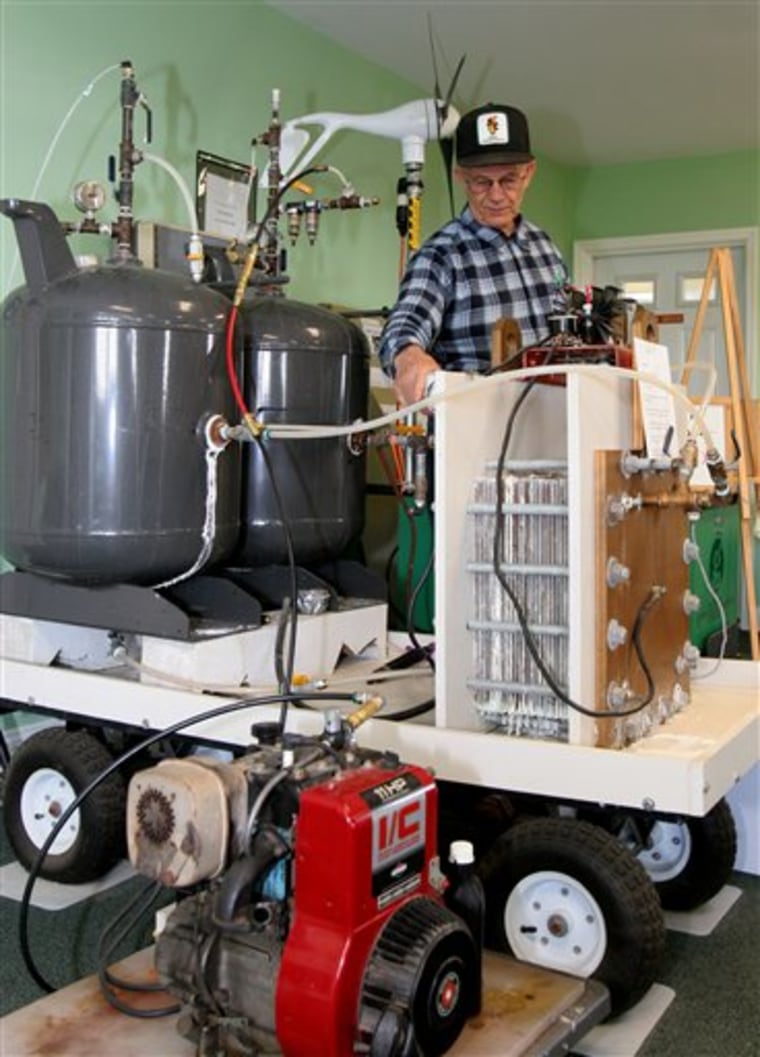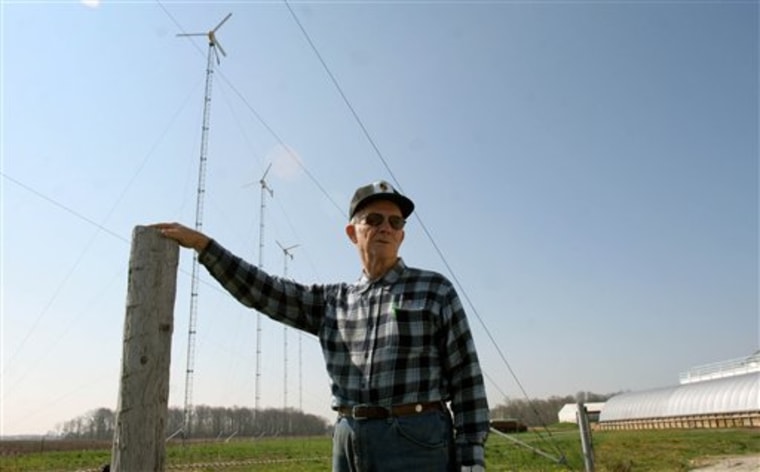When he was laid up in the hospital recovering from knee surgery, farmer Ralph Dull picked up a thick notebook dropped off by a friend that detailed how wind generators produce electricity.
"I had plenty of time to read it," Dull recalled. "And I said, 'That's something we could do.'"
The 79-year-old Dull has since become an Ohio pioneer in green farming and renewable energy, jumping into it in hopes of increasing energy efficiency, cutting costs and protecting the environment.
There are six wind generators on his 2,800-acre farm in western Ohio. In one building sits a machine that produces hydrogen, made from electricity and water. Dull hopes it will soon replace the gas in his forklifts and supplant the propane that heats his pig barn.
Dull's office is geothermal heated and cooled. He dries his seed corn by burning rejected corn instead of propane, and he grinds corn cobs to sell as horse bedding and mulch.
Dull's practices have drawn such visitors as Ohio Gov. Ted Strickland, U.S. Sen. Sherrod Brown and Ohio Agriculture Director Robert Boggs. Strickland came away impressed by the farm and what it could mean for agriculture's role in environmental protection.
"He is demonstrating through his farming practices that you can have a profitable farming operation while caring for the Earth," Strickland said.
The governor and GOP legislative leaders want the state to rely more on alternative energy and are pushing a stimulus package that would earmark $150 million for advanced energy sources such as solar power, wind and clean coal.
Moving to mainstream
Experts say that while Dull is still the exception, more farmers are expressing interest in green farming and in using renewable energy sources. Beyond environmental concerns, cost-conscious farmers are seeing economic benefits as fuel and fuel-based fertilizer prices soar.

"It's moving from the early adopters and true believers; now it's mainstream," said Geoff Greenfield, president of Third Sun Solar and Wind Power, which sells and installs wind generators and solar equipment for commercial and residential users.
But uncertainty remains about whether wind generators can pay for themselves, whether there is a market for hydrogen, if there is interest among neighboring farmers in sharing expenses and labor, and whether there can be an adequate supply of rejected corn to fuel the dryers.
Steve Fugate, a renewable energy expert in Iowa City, Iowa, said farmers must adopt some of these new technologies to survive.
"If they don't, they're done," he said. "This run-up in fuel prices has really put the branding iron to their backsides."
U.S. prices for natural gas, a major component in the production of the nitrogen fertilizer anhydrous ammonia, have nearly doubled since late August.
Crunching the numbers
Dale Arnold, director of energy services for the Ohio Farm Bureau, said more operators of small and medium-sized farms of about 600 acres or smaller — not just the larger farms — are crunching numbers and trying to decide whether it makes financial sense to invest in alternative energy.
"This is not what you would call an impulse buy," Arnold said. "You're talking about spending the same amount of money as you would on a new combine or major piece of equipment on their farm."
Dull spent $210,000 on his 120-foot-high windmills, 25 percent of which was bankrolled by a state grant. The windmills account for about 15 percent of the $40,000 worth of electricity required to run the farm each year. Dull spent about $100,000 on his corn-drying furnace; at current propane prices, it has saved him about $150,000.
"Five or six years ago, Ralph would have been considered a voice crying out in the wilderness," said Arnold. "Now, other farmers are lining up behind him."
